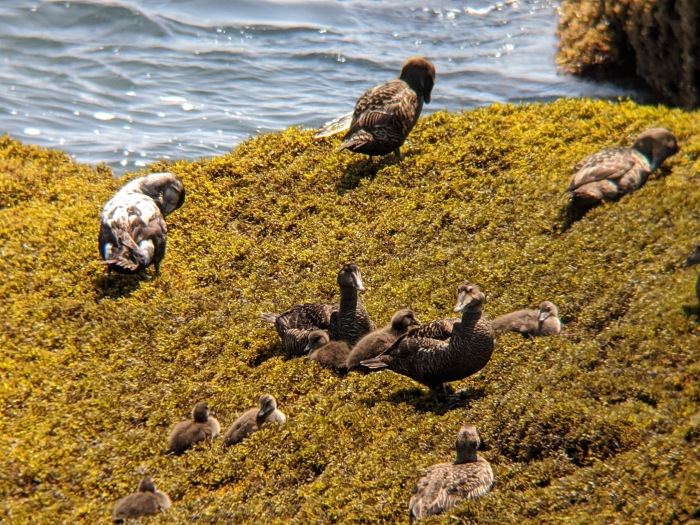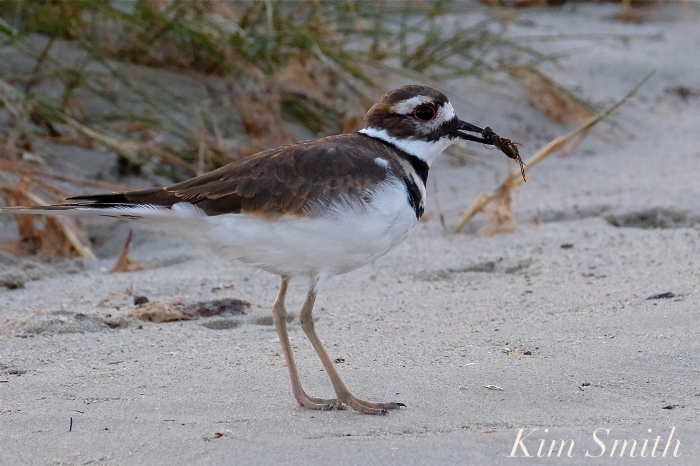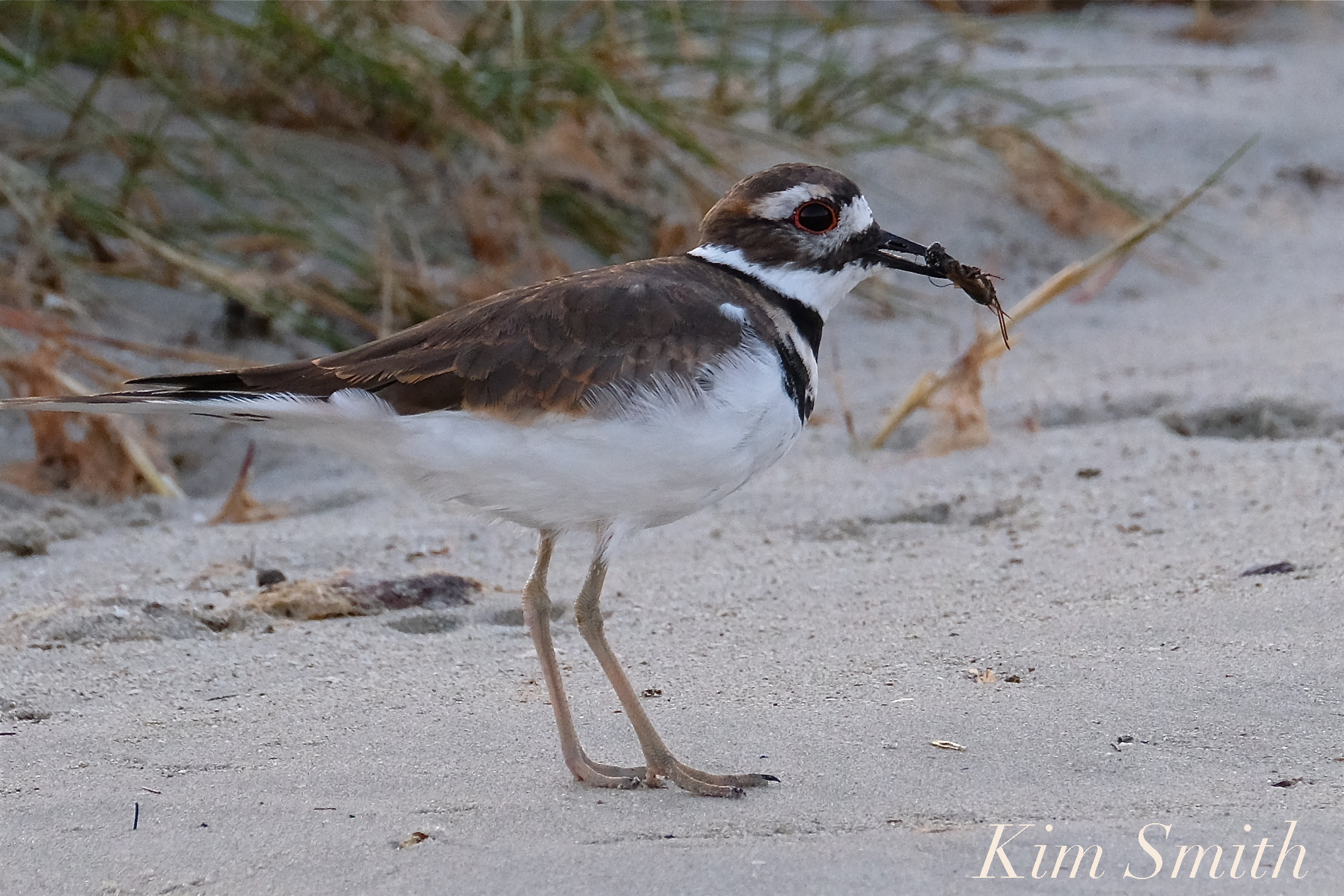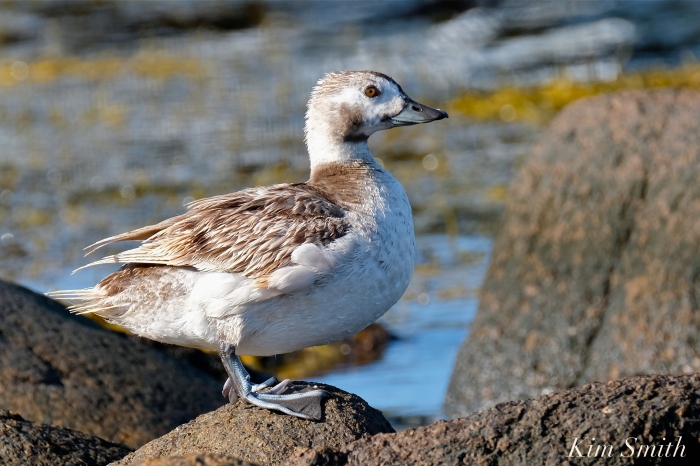molting, preening, feeding, rafting and resting in coves off Gloucester and Rockport.
Common eiders cluster in the coves during breeding season. They can’t fly when they’re molting and raft off loudly and orderly when disturbed by small boats, people on shore, and gulls. When adults scaled the rocks, the elements were handy. Waves tossed the ducklings atop a veritable shag carpet of seaweed which looks especially thick this season.

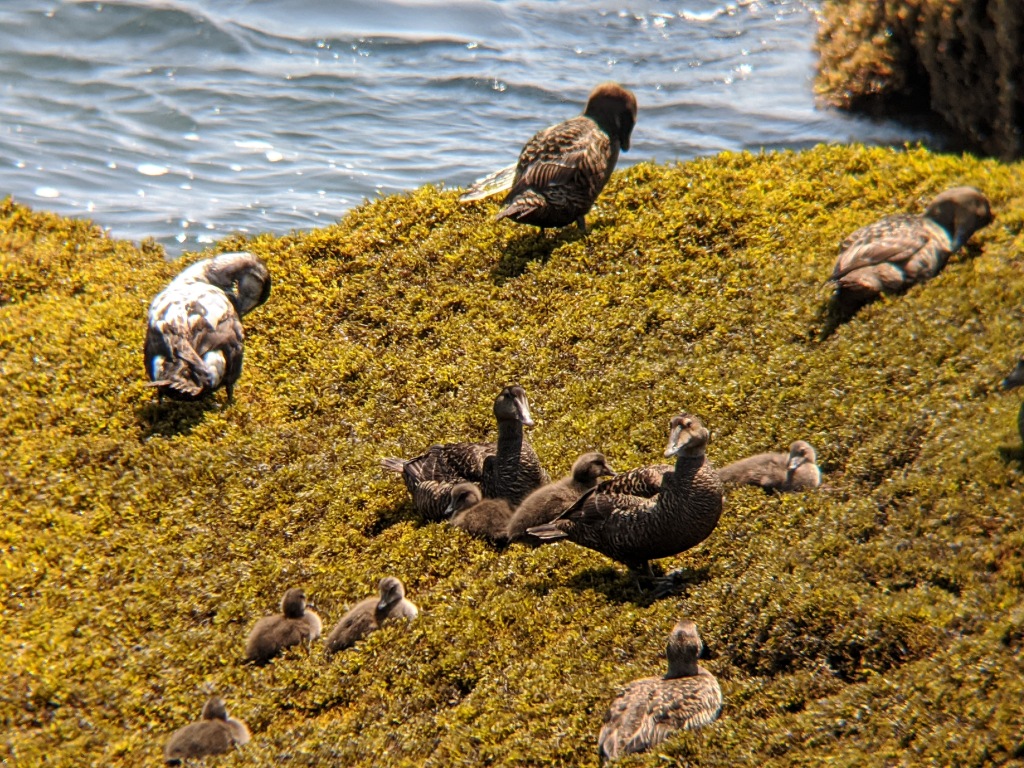

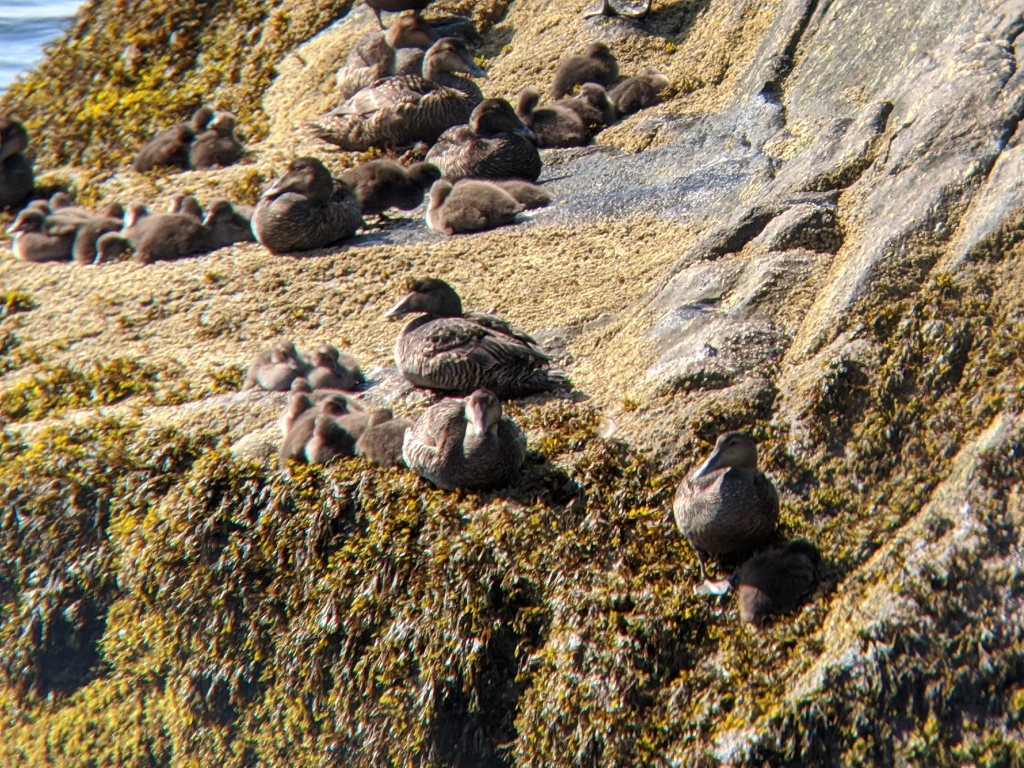


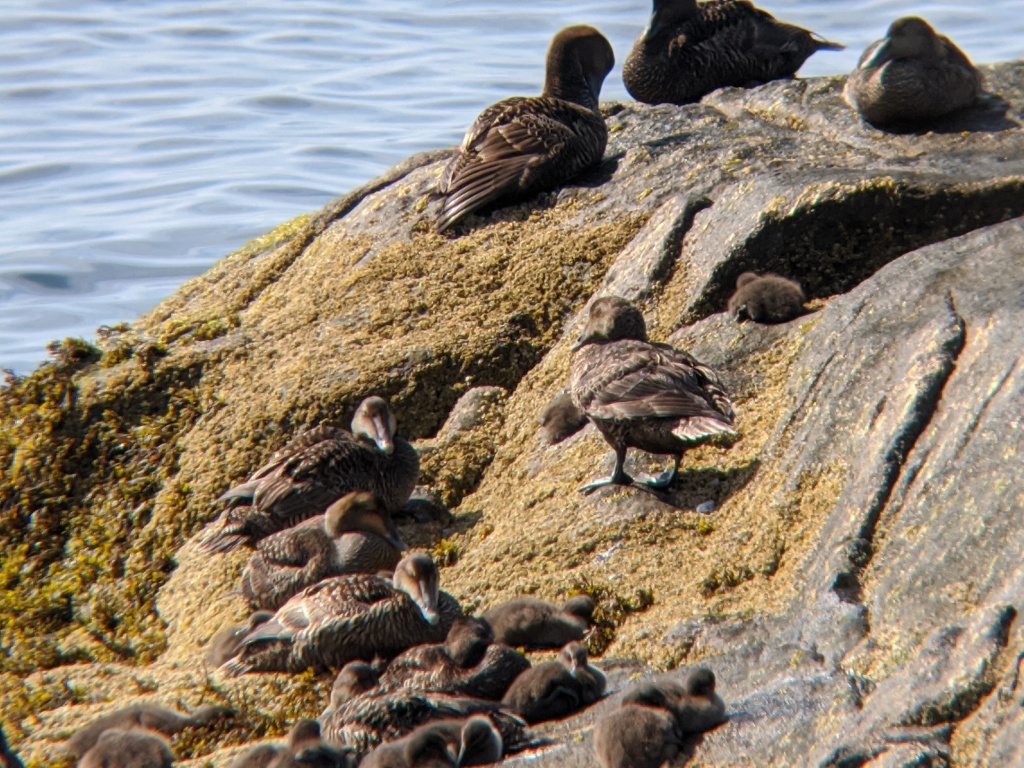
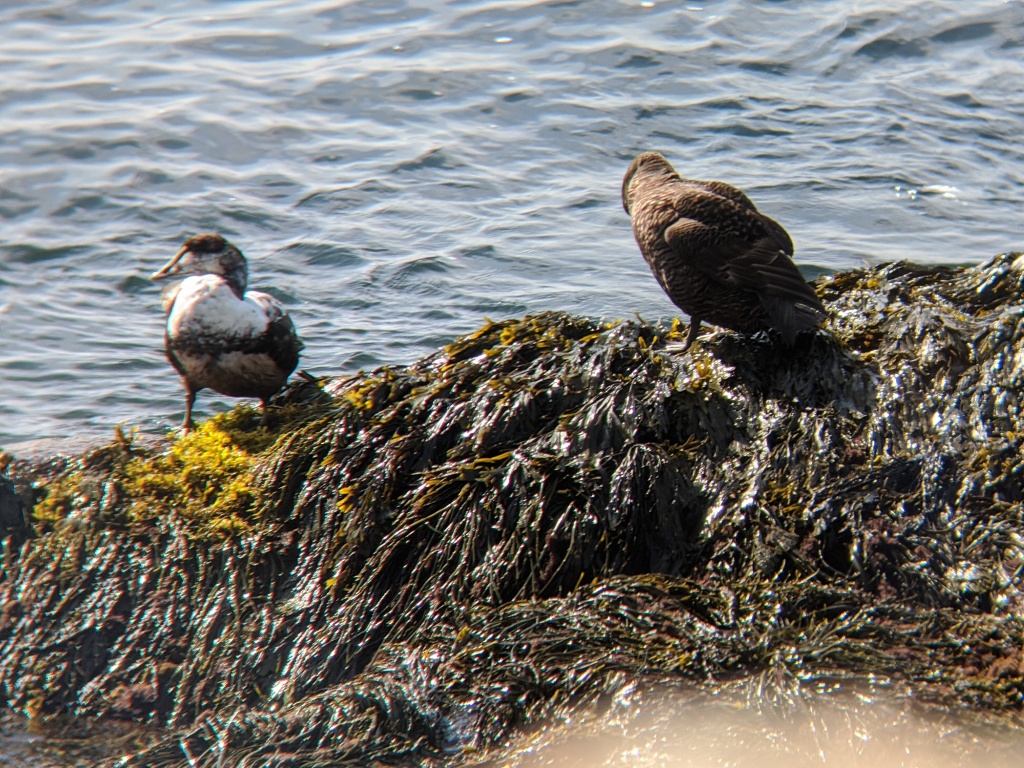
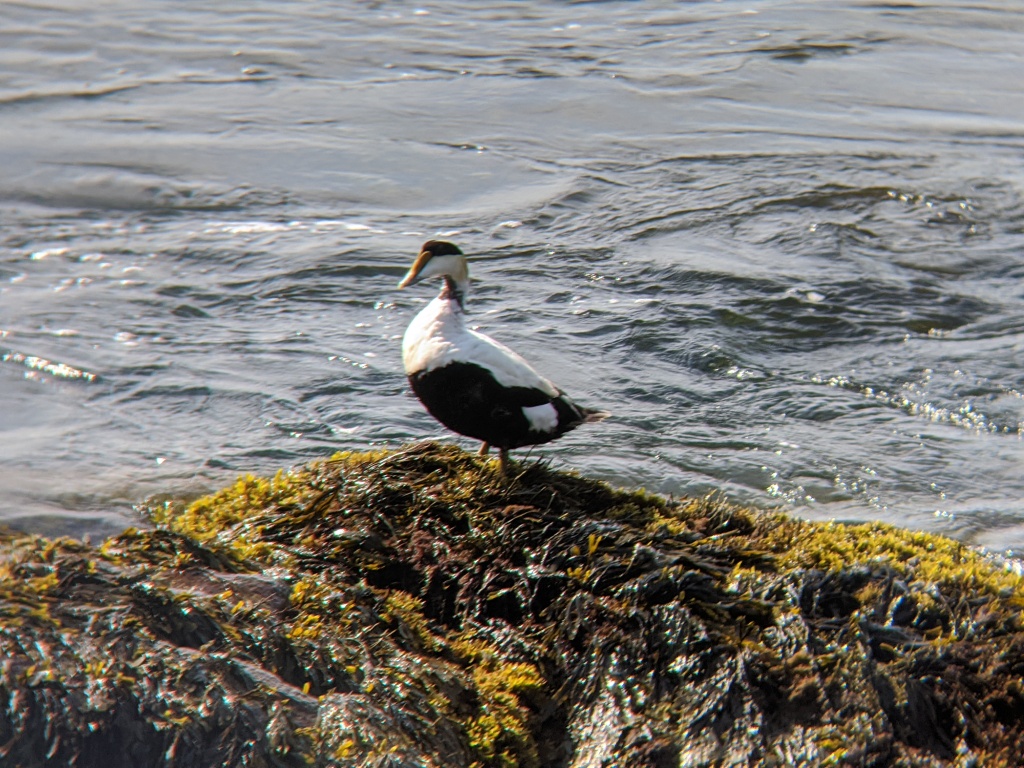

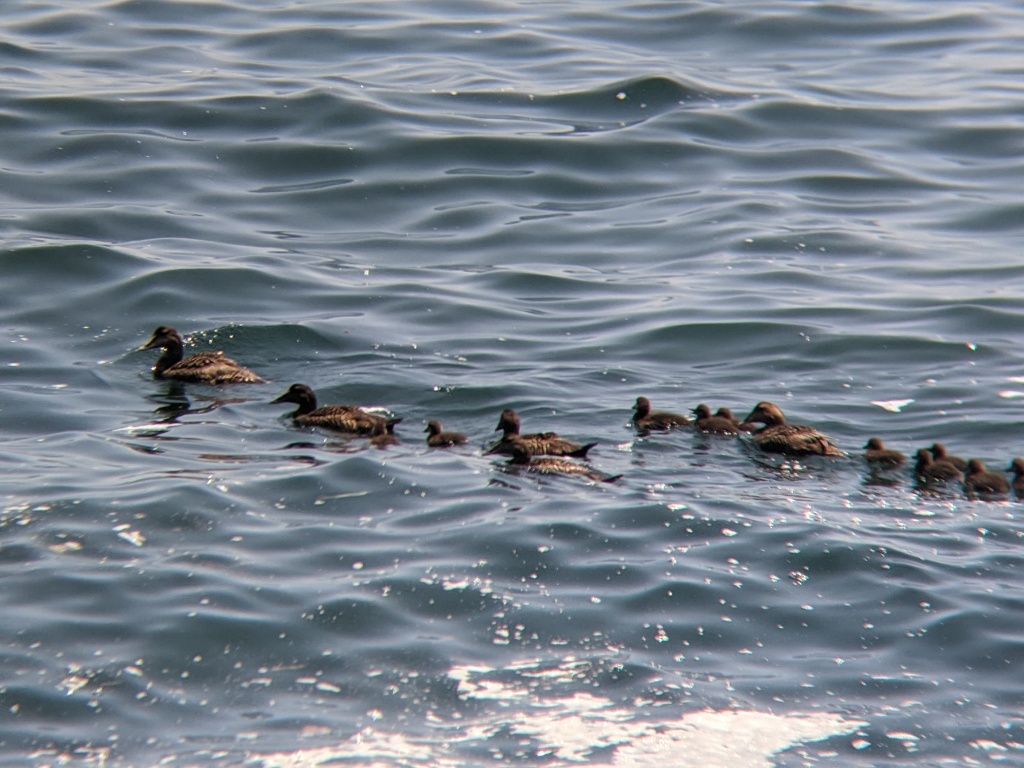


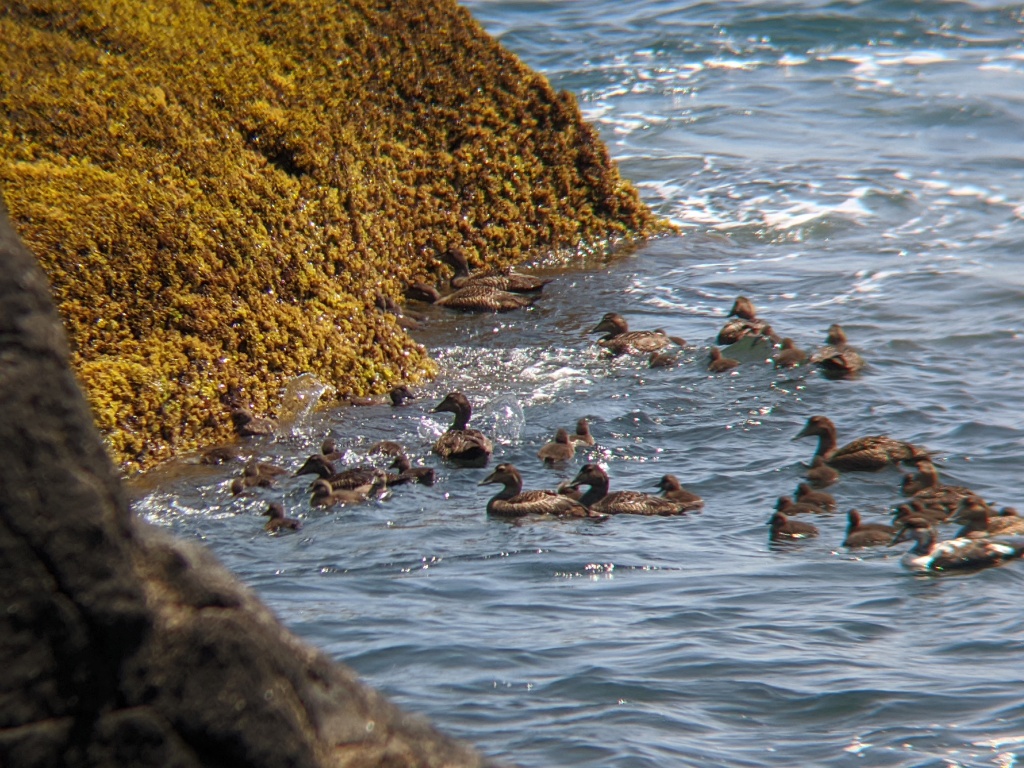

photos: Common Eider breeding season 2023 in Gloucester and Rockport coves off Long Beach. Distant snapshots through binoculars.
Breeding season for barn swallows and tree swallows, too–incubating now. Tree swallow photo bomb in one of the video snippets below. (Adult swallows take breaks from incubating to eat. Common eider females incubate solo and do not eat until after hatching.)
